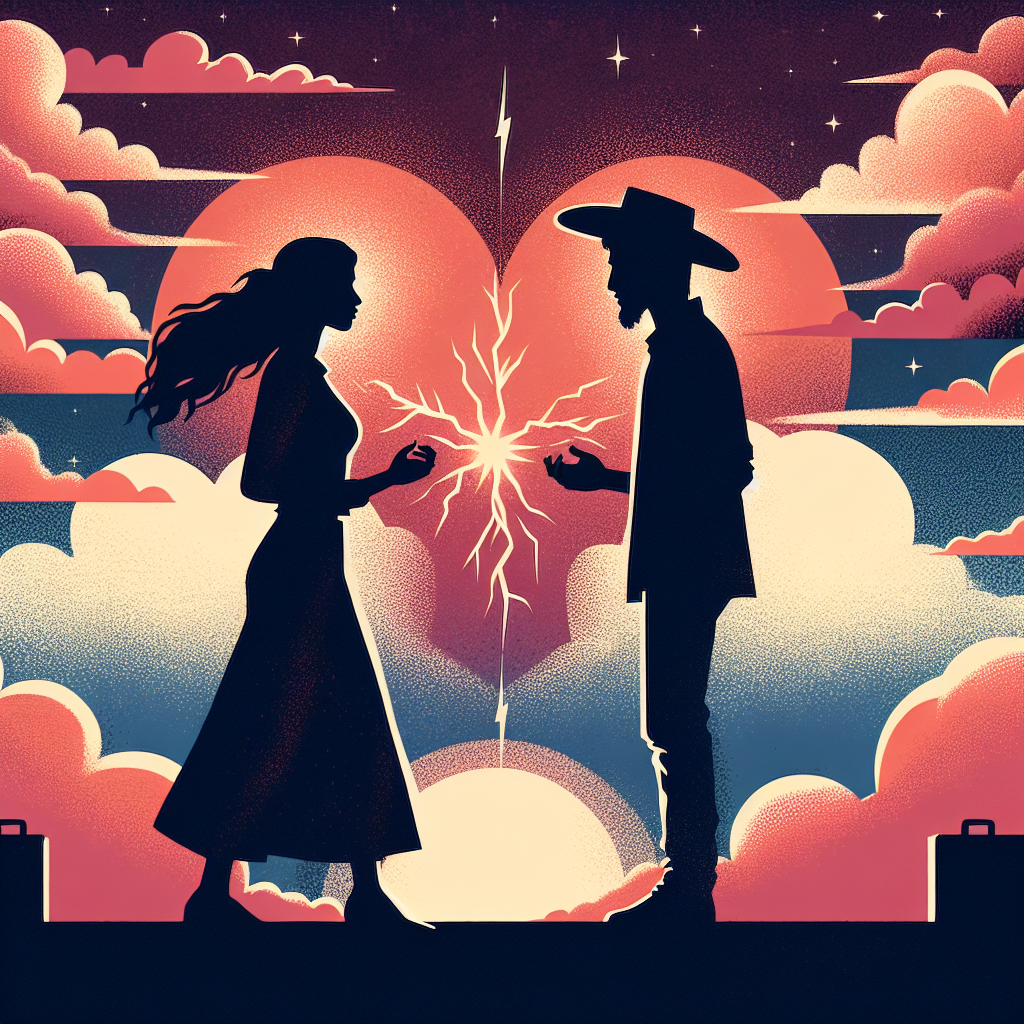Mastering the Enemies-to-Lovers Trope: 5 Essential Elements Every Writer Needs
The enemies-to-lovers trope stands as one of the most enduring and captivating storylines in romantic fiction. This powerful narrative device transforms hatred into love, creating an emotional journey that resonates deeply with readers across genres. But what makes this trope so irresistible, and how can writers harness its potential effectively?
Understanding the Enemies-to-Lovers Foundation
At its core, the enemies-to-lovers trope centers on two characters who begin their story in direct opposition. Whether they're workplace rivals, representatives of feuding families, or individuals with fundamentally different worldviews, their initial relationship is built on conflict, misunderstanding, and genuine dislike.
The beauty of this trope lies in its transformation. What begins as animosity slowly evolves into respect, then attraction, and ultimately love. This progression creates a satisfying character arc that feels both surprising and inevitable—a hallmark of excellent storytelling.
The Five Essential Elements of Enemies-to-Lovers Stories
1. Genuine Initial Conflict
The foundation of any successful enemies-to-lovers story rests on authentic antagonism. These characters don't simply misunderstand each other—they have legitimate reasons for their opposition.
Common sources of conflict include:
- Competing professional goals or ambitions
- Family feuds or historical grievances
- Opposing moral philosophies or values
- Past betrayals or misunderstandings
- Social or economic class differences
The key is ensuring their hatred feels justified from both perspectives. Readers should understand why each character views the other as an adversary, making their eventual reconciliation more meaningful.
2. Undeniable Chemistry and Tension
Even amid their hostility, successful enemies-to-lovers stories showcase unmistakable chemistry between the protagonists. This tension manifests in various ways:
- Physical awareness during confrontations
- Intellectual sparring that reveals mutual respect
- Emotional intensity that goes beyond simple dislike
- Subconscious attraction that characters initially deny
Writers should layer this tension throughout early interactions, creating moments where the line between love and hate blurs. The famous "charging at each other to argue but stopping mere inches apart" trope exists because it perfectly captures this duality.
3. Forced Proximity
External circumstances must compel these characters to spend time together, breaking down their defensive barriers. This forced interaction serves multiple narrative purposes:
Effective proximity scenarios:
- Professional partnerships or collaborations
- Shared living situations or travel
- Crisis situations requiring cooperation
- Social obligations or family connections
- Protective arrangements or alliances
During this proximity phase, characters begin seeing beyond their preconceptions. The arrogant businessman reveals his dedication to charity work. The rebellious artist demonstrates surprising vulnerability. These revelations plant seeds of empathy and understanding.
4. Gradual Emotional Growth
The transformation from enemies to lovers requires authentic character development. Both protagonists must evolve, acknowledging their own flaws while recognizing their opponent's hidden depths.
This growth typically involves:
- Self-reflection about past judgments and behaviors
- Empathy development for the other's perspective
- Vulnerability in sharing personal struggles or fears
- Forgiveness for past wrongs or misunderstandings
- Courage to risk emotional connection despite past conflict
Writers should avoid rushing this process. The most satisfying enemies-to-lovers stories allow characters to resist their growing feelings, creating internal conflict that mirrors their external journey.
5. Healing and Transformation
The final element involves both characters finding healing through their connection. Their love doesn't simply overcome their differences—it transforms them into better versions of themselves.
This transformation often includes:
- Resolving the original source of conflict
- Supporting each other's goals and dreams
- Learning to trust despite past betrayals
- Integrating opposing perspectives into a unified vision
- Building a future that honors both their journeys
Character Archetypes in Enemies-to-Lovers Stories
The Alpha Archetype
Often confident and successful, these characters may initially appear arrogant or emotionally distant. Their journey involves learning vulnerability and discovering that strength can coexist with tenderness.
Common traits:
- Professional success masking personal insecurities
- Protective instincts disguised as controlling behavior
- Fear of emotional intimacy stemming from past wounds
- Gradual revelation of their caring, devoted nature
The Strong-Willed Challenger
These characters refuse to be intimidated, matching their opponent's intensity while maintaining their own moral compass. Their arc involves learning to trust and accept love without compromising their independence.
Common traits:
- Fierce independence born from past disappointments
- Sharp wit used as both weapon and defense mechanism
- Strong moral convictions that initially clash with their opponent
- Capacity for deep loyalty once trust is established
Case Study: Effective Implementation
Consider how successful enemies-to-lovers stories layer these elements. In well-crafted narratives, initial conflicts feel substantial enough to justify genuine animosity, while early interactions hint at deeper compatibility. The forced proximity phase reveals character depths that contradict first impressions, and the gradual shift from hatred to love feels both surprising and inevitable.
Writing Tips for Success
Start with Strong Motivations
Ensure both characters have compelling reasons for their initial opposition. Weak conflicts lead to unconvincing reconciliations.
Balance Power Dynamics
Avoid creating scenarios where one character holds all the power. The most engaging enemies-to-lovers stories feature evenly matched opponents.
Layer the Tension
Weave attraction through confrontational scenes. Let readers see the chemistry even when characters remain oblivious.
Show, Don't Tell
Demonstrate character growth through actions and choices rather than internal monologue alone.
Pace the Transformation
Allow adequate time for the emotional journey. Rushed reconciliations feel unearned and unsatisfying.
The Enduring Appeal
The enemies-to-lovers trope continues captivating readers because it mirrors real human complexity. We've all experienced relationships that began poorly but evolved into something meaningful. This trope validates the possibility of transformation, forgiveness, and finding love in unexpected places.
For writers, mastering this trope means understanding that the best enemies-to-lovers stories aren't really about hate transforming into love—they're about two people discovering that their perceived enemy might actually be their perfect match. The hatred was simply love waiting to be recognized.
Whether you're crafting contemporary romance, fantasy epics, or any genre in between, these five elements provide the foundation for enemies-to-lovers stories that will keep readers breathlessly turning pages, eager to witness the moment when warfare finally surrenders to love.
💝 Ready to Explore More Romance?
If you enjoyed this article about From Enemies to Lovers writing, discover thousands of captivating love stories on our platform.
Download App







